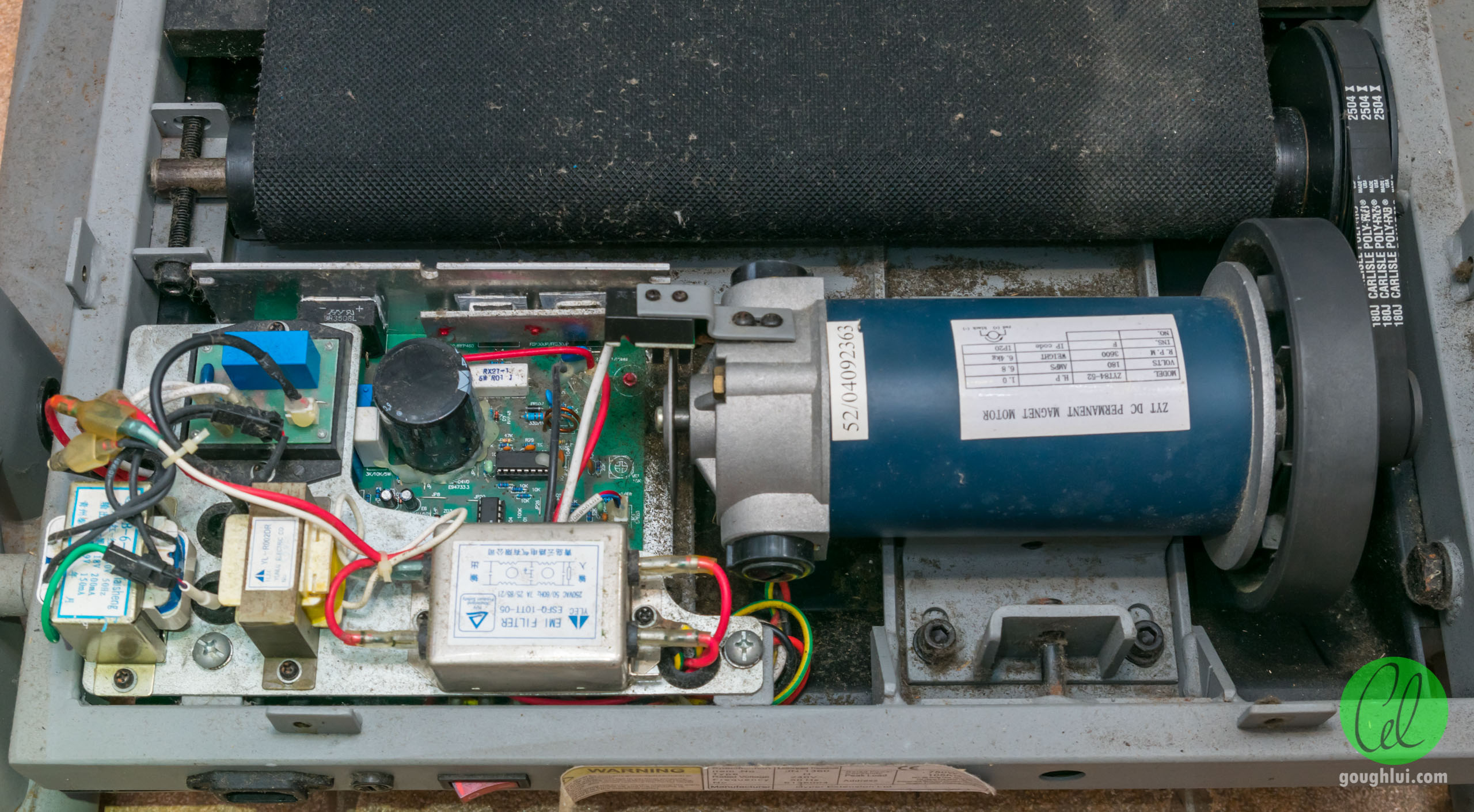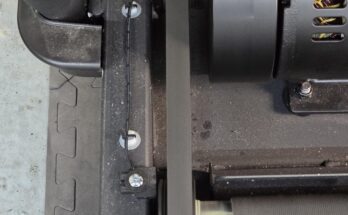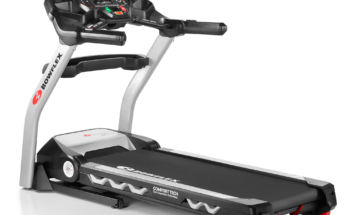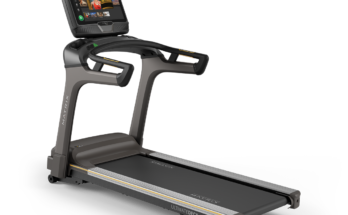To determine if your treadmill motor is failing, listen for unusual noises or check for a burning smell. Poor performance or a non-responsive treadmill can also indicate motor issues.
Treadmill motors endure considerable wear and tear with regular use, leading to potential malfunctions that can disrupt your workout routines. Spotting the signs of a bad motor early can save you from costly repairs or replacements down the line. From fitness enthusiasts to casual walkers, anyone relying on their treadmill must be aware of these red flags.
Being attuned to changes in your treadmill’s performance is not just about maintaining the equipment; it’s also about ensuring a safe and effective exercise experience. Keep your home gym running smoothly by knowing how to identify a faulty treadmill motor with these quick checks.

Credit: gosrx.com
Signs Of A Failing Treadmill Motor
Knowing when your treadmill motor is in trouble can save you time and money. A good motor is key to a smooth workout. Here is how to spot signs of trouble early.
Erratic Speeds Or Stops
Unexpected changes in speed or sudden stops during a workout can be alarming. These can indicate a motor struggling to maintain power.
- Speed increases without input
- Machine slows down without reason
- Sudden stops during use
Burning Smells Or Noises
A bad motor often gives off a distinct burning smell. This is a sign of overheating. The noise it makes might change too.
- Whining or grinding sounds are common
- Louder than normal operation
- Smoke or a burning odor indicates immediate attention
Error Codes On Display
Modern treadmills show error codes when something is wrong. These codes can indicate motor issues. Refer to your manual to decode them.
| Error Code | Possible Meaning |
|---|---|
| E1 | Motor unable to start |
| E2 | Motor voltage issue |

Credit: goughlui.com
Common Symptoms
Knowing when your treadmill motor has issues is important to maintain your workout routine. A bad motor can create several problems. Let’s understand some common symptoms that signal a motor problem in your treadmill.
Loss Of Power
One of the tell-tale signs of a failing treadmill motor is the loss of power. This could appear as:
- Unexpected slowing or stopping during use.
- A struggle to keep up with set speeds.
- Pattern of power loss gets worse with time.
Overheating Issues
Treadmill motors that overheat present distinct signs:
- An unusual hot smell when the treadmill is running.
- The exterior of the motor feels hotter than normal.
- Automatic shutdown to prevent damage from heat.
If these symptoms occur, immediate action is necessary.
Difficulty Starting
Struggling to start is another indication of motor trouble:
- Several attempts may be needed to get the motor running.
- The treadmill may hesitate before picking up speed.
- Motor stalls before beginning normal operation.
These difficulties often show a motor in need of attention or repair.
Basic Troubleshooting Steps
Is your treadmill acting up? Before you consider a costly replacement or repair, there are several troubleshooting steps you can take. A bad motor might be the culprit, but how can you tell? Here’s what you can do to diagnose the problem yourself.
Inspecting Power Sources
Start with the basics. Check your treadmill’s plug and power cord. Are they firmly connected? Look for any visible damage like breaks or frays.
- Ensure the outlet is functional by testing it with another device.
- Verify the treadmill’s circuit breaker hasn’t tripped.
Resetting The Treadmill
A simple reset can often do the trick. Unplug your treadmill for at least 15 seconds. Plug it back in, and find the reset button or pinhole. Press it if available.
| Step | Action |
|---|---|
| 1 | Unplug treadmill |
| 2 | Wait 15 seconds |
| 3 | Plug in and reset |
Checking The Motor Belt
Is the belt tight and intact? A loose or damaged motor belt could be to blame.
- Turn off and unplug your treadmill.
- Remove the motor cover carefully.
- Look for cracks or wear on the belt.
- Test the tension by pressing down on it.
- A properly tensioned belt should only depress about an inch.
Remember: Always exercise caution and consult your treadmill’s manual before opening any components.
Advanced Diagnosis Techniques
Identifying a faulty treadmill motor often involves simple observations like strange noises or a burning smell. Yet, advanced diagnosis techniques require particular tools and a bit more savvy. This deep dive into your treadmill’s health will cover the essentials of three advanced techniques used to test a treadmill motor: using a multimeter, examining motor brushes, and testing the motor capacitor.
Using A Multimeter
To kick off our advanced diagnostics, tools like a multimeter come into play. This device measures electrical properties like voltage, current, and resistance. Here’s how to test your treadmill’s motor:
- Ensure the treadmill is unplugged to avoid any accidents.
- Locate the motor’s terminal. It’s usually where the red and black wires connect.
- Set your multimeter to the ohm setting symbolized by the Greek letter Omega (Ω).
- Place the multimeter leads on the terminal ends.
- Read the multimeter. A good motor shows low resistance, while high or infinite resistance suggests a problem.
Motor Brush Examination
Moving on to the motor brushes, regular wear and tear could lead to poor contact and motor failure. Follow these steps to examine the brushes:
- Disable power to the treadmill and access the motor’s brushes.
- Remove the brushes for inspection.
- Look for uneven wear, chips, or discoloration.
- Brushes should be at least half an inch long to function properly.
- Replace the motor brushes if necessary.
Testing The Motor Capacitor
Finally, a treadmill’s motor capacitor might be the culprit if it’s not starting despite a functioning motor. Use these steps to test it:
- Disconnect the treadmill from power.
- Locate the capacitor; it looks like a battery.
- Remove the capacitor carefully; it may still hold a charge.
- Use a multimeter set to the capacitance setting.
- Connect the multimeter leads to the capacitor’s terminals.
- A reading out of specification range indicates you need a new capacitor.
Preventive Maintenance Tips
Keeping your treadmill in top shape helps it last longer. Think of your treadmill like a car. It needs regular checks to run smoothly. These tips will help stop your treadmill motor from going bad. Each step is easy to do and saves you money and stress later.
Regular LubricationRegular Lubrication
A well-oiled treadmill runs quietly and smoothly. Check the user manual for the right kind. Most machines need lubrication every three months. This keeps the motor cool and reduces wear and tear. A simple step goes a long way.
Belt Alignment ChecksBelt Alignment Checks
A belt that’s not aligned causes stress on the motor. Make sure it’s straight and centered. You’ll need an Allen wrench for this. Tighten or loosen as the manual says. Do this every month for the best results. Your motor will thank you.
Dust and Debris CleaningDust And Debris Cleaning
Dust and pet hair can clog up your machine. Keep your treadmill clean to prevent damage. Unplug it first. Wipe the belt and deck with a damp cloth. Use a vacuum around the machine. Don’t forget the motor area. This should be done weekly. A clean treadmill keeps your motor happy and healthy.
Perform these simple steps regularly. Your treadmill and its motor will have a longer, problem-free life. Skip these, and you might face costly repairs. The effort you put in now will save you trouble later on.

Credit: www.amazon.com
Frequently Asked Questions For How To Tell If Your Treadmill Motor Is Bad
Can A Treadmill Motor Burn Out?
Yes, treadmill motors can burn out due to overheating, electrical shorts, or excessive use without proper maintenance. Regular servicing helps prevent this issue.
Do Treadmill Motors Wear Out?
Yes, treadmill motors can wear out over time due to regular use and strain, necessitating repair or replacement to maintain optimal performance.
How Long Should A Treadmill Motor Last?
A treadmill motor should typically last 7 to 12 years with regular maintenance and average use.
How Much Does It Cost To Fix A Treadmill Motor?
The cost to repair a treadmill motor typically ranges from $200 to $400. This price can vary based on the motor’s brand and the service provider.
Conclusion
Recognizing a faulty treadmill motor is key to maintaining your fitness routine. Listen for odd noises, monitor unusual smells, and check for overheating or speed inconsistencies. Addressing these signs promptly can save you from costly repairs or replacements. Stay alert to keep your workouts safe and your equipment in top shape.



